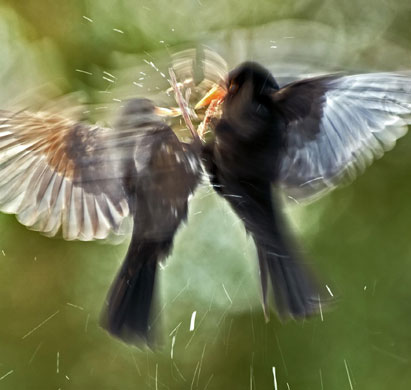
The government body Natural England have added four non-native species to the list of birds that can be shot without having to apply for an individual license: Ring-tailed parakeet, Monk parakeet, Canada goose and Egyptian goose.
The Ring-tailed parakeet, a conspicuous resident in the south of London, is often a scourge for farmers in its native terrain (ranging from Africa to the Himalayas), as large flocks wreak mass destruction on crops. So far only a few isolated incidents of crop-damage have been reported in England, so its inclusion in the list would seem to be a precautionary move. There is also concern about the impact of this rapidly expanding species on native wildlife, particularly other tree hole-nesting birds, such as woodpeckers.
Any species on the general license list can only be culled with legitimate justification.
More in Independent and RSPB










